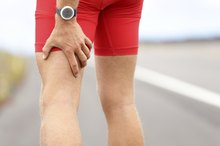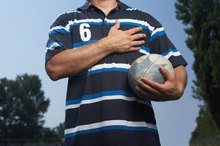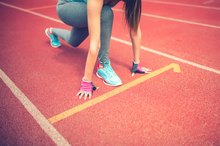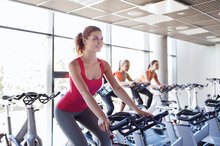Lower Abdominal Cramping After Exercise
Though consistent exercise is encouraged by physicians, trainers and other health specialists, it is possible to harm yourself while doing it. From minor sprains to broken bones and uncomfortable cramping, workouts are a breeding ground for injuries and ailments. Lower abdominal cramping after exercise is a common discomfort experienced by both consistent and novice exercisers and occurs for a variety of reasons.
If you are experiencing serious medical symptoms, seek emergency treatment immediately.
Side Stitch
Lower abdominal cramps may be the result of tightened/cramped abdominal wall muscles. This type of cramp is commonly referred to as a side stitch 1. Hard, erratic or vigorous breathing is often the culprit for side stitches. Because the body isn't getting enough air, your muscles are deprived of oxygen. Low oxygen supplies cause your muscles to tighten and cramp, which results in pain ranging from mild to severe.
- Lower abdominal cramps may be the result of tightened/cramped abdominal wall muscles.
- Hard, erratic or vigorous breathing is often the culprit for side stitches.
Side Stitch Treatment
Side Pain After Exercise
Learn More
Side stitches are easily treated. First, slow down or stop exercises altogether to catch your breath. Wait until your normal breathing pattern has returned so that oxygen can reach all of your muscles. If you can't stop exercising, you can also reach down and gently massage the affected lower abdominal muscles. Continue massaging until the pain has subsided.
- Side stitches are easily treated.
- If you can't stop exercising, you can also reach down and gently massage the affected lower abdominal muscles.
Gastrointestinal
In some cases, you may experience what seems like an actual lower abdominal muscle cramp when, in actuality, you're facing a gastrointestinal issue. Gastrointestinal-related cramping can be caused by flatulence, dehydration, bloating, eructation or a generic stomach ache. Exercise can sometimes make these issues worse.
Gastrointestinal Treatment
How to Treat Severe Muscle Soreness From Weightlifting
Learn More
Make sure you are fully hydrated before, during and after exercise. Gastrointestinal ailments are often experienced by runners and extreme athletes. To prevent gastrointestinal-related cramping, don't exercise on a full stomach. Always avoid food and beverages that cause belching, flatulence, bloating and upset stomachs. Food and drinks to avoid include milk and products that are high in sodium or sugar or extremely cold.
- Make sure you are fully hydrated before, during and after exercise.
- Always avoid food and beverages that cause belching, flatulence, bloating and upset stomachs.
Related Articles
References
Writer Bio
Wendy Rose Gould is a professional journalist who has contributed to "Glamour" magazine and the Huffington Post, among other publications. After internships at the "Indianapolis Business Journal," "Kiwanis International" and "NUVO Newsweekly," she earned BA degrees in journalism and philosophy from Franklin College in 2008. Gould specializes in lifestyle topics.









